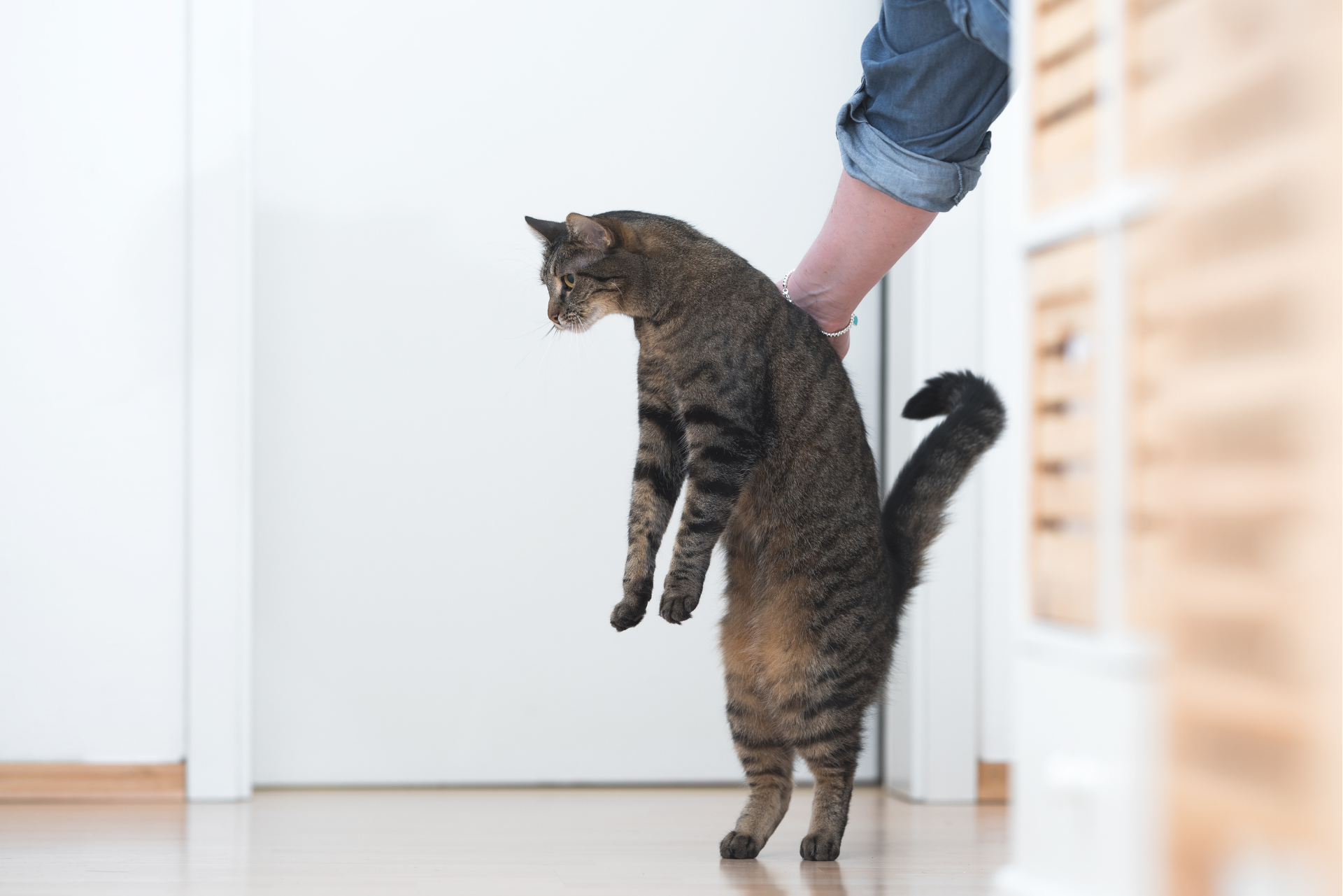Cats can easily get infected with worms. Even the indoor cats are not out of the danger. Tapeworm is a common parasite among felines. This can make your pet a lot weaker and vulnerable.
Fortunately, the treatment of tapeworms is available and the condition is totally curable. But how do cats get tapeworms, especially the indoor ones? The experts claim that indoor felines get tapeworms mainly by digesting flea larvae. See, each worm is disgusting and if your cat has it, you need to start the treatment immediately.
If you are a beginner and still figuring out the risk of tapeworms in cats, this is the article you need right now.
Cat Tapeworm

What is tapeworm in cats? Or how do tapeworms look? I am sure all these questions are storming in your head. Well, tapeworms are one kind of intestine parasite. Let’s look at some facts on tapeworms:
- Tapeworms are flat, long, and white.
- Usually, a tapeworm can grow 8 inches long. An adult tapeworm can reach up to 20 inches.
- Tapeworms have a hook-like mouth. They anchor on a feline’s intestine using this hook.
- These parasites can not live on their own. They depend on the host’s body for nutrients and food.
- The tapeworms start shedding as soon as they become mature. The shedding segment is known as proglottids. The proglottids are of the size of white rice grains and you can find them in your feline’s feces.
Does tapeworm affect a kitty?
The tapeworms do not cause any severe harm to the cat. But if the condition goes untreated, the kitty will start losing weight. Why? It is because the parasites will absorb most of the nutrients from the food the cat has digested.
Again, if the number of tapeworms increases, these parasites can travel to the cat’s stomach. In that case, the cat will start throwing up more frequently. You may notice white rice grain-sized worms in the kitty’s puke.
How do cats get tapeworms?
A cat can get tapeworms in various ways. Even indoor cats are not safe from these parasites. Here are the top two ways how a tapeworm gets into a feline’s intestine:
1. Fleas
This is the most common way a cat gets tapeworms. Sometimes the fleas carry tapeworm larval. When a feline ingest the infected flea while grooming itself, the flea transmits a tiny worm inside the cat. The small tapeworm grows overtime and spreads its population.
2. Hunting
A cat has excellent hunting skills. When you take your indoor cat for an outing, it will chase small animals like birds or squirrels. Again, in your house, if the feline finds lizards or rodents, it may hunt them down.
If the small animals have tapeworms, biting them, or involving in a fight with them can transmit the worm larvae in your feline. Outdoor cats can eat mice that are infected with tapeworms. This way those felines can get infected with tapeworms.
Symptoms of tapeworms in cats

Imagine, your cat has got tapeworms. How will you know? Most cats do not show any symptoms. But if the cat gets a heavy flea infestation, it will end up having a large number of tapeworms in its intestine. And then the feline will start showing some signs. For example,
- Diarrhea
- Weight loss
- Vomiting
- Loss of appetite
You will notice the small-sized tapeworms in the cat’s feces. Sometimes the worms come out of the cat’s intestine through the anus even without the stool. In most cases, the tapeworms are about a half inches long. These parasites can not survive without the host’s body.
How will you recognize them? After coming out from the host’s body, the tapeworms start drying up. After a while, these worms will look like sesame seeds. So, check the cat’s litter box for any clue.
Sometimes the tapeworms come out of the feline’s stomach with the vomit. When the worms migrate to the anal area, it can cause itching and so, the cat starts licking its butt. However, the heavy infestation may come with secondary disease. If the cat stays dehydrated, the tapeworms will lead to an inflammatory bowel movement.
Tapeworm diagnosis in cats
How do cats get tapeworms? You have got the top reasons. But do you know how the vets diagnose the worms in a cat’s intestine?
There are a few ways of finding out if the cat is suffering from a tapeworm infection or not. Such as:
- Stool test
- Blood test
The diagnosis of tapeworms in cats can be a bit difficult. This is because the felines are wonderful groomers. They hide the feces in the litter box and so, the owners can not decide if there is anything wrong going on with the kitty or not.
When you take the pet to a vet, he will give a stool sample analysis. After examining the feces of your feline, he will give the final results. Sometimes, the vet prefers a blood test to determine if the cat is suffering from tapeworm infection or not.
How to treat tapeworms in cats
If your cat is suffering from tapeworm infection, do not worry. Getting rid of tapeworms is absolutely easy and effective. The vet will suggest a dewormer for your cat. In most cases, the praziquantel works the best. But do not use any medication without the permission of your vet.
The dewormers can be in a form of a tablet, liquid, or injection. The medicine will dissolve the tapeworms in the feline’s intestine. In most cases, the meds do not show any side effects on cats.
Can I get tapeworms from my cat?
Though it is rare, humans can get tapeworms. If you accidentally digest an infected flea, you will get tapeworms. But not directly from the cat.
The feline is an intermediate host. Touching a sick cat or cleaning its stool will not transmit the larvae to you.
How do cats get tapeworm? What are the symptoms and treatments? I have discussed everything in this article. If you observe any signs of tapeworms in your cat, take it to the vet for diagnosis and medications.
Related:
How To Get Rid of Tapeworms in Cats
How To Treat Worms in Cats? 6 Ways to Deworm Cats
How To Get Rid of Worms in Cats? Best 4 Ways are Explain






































